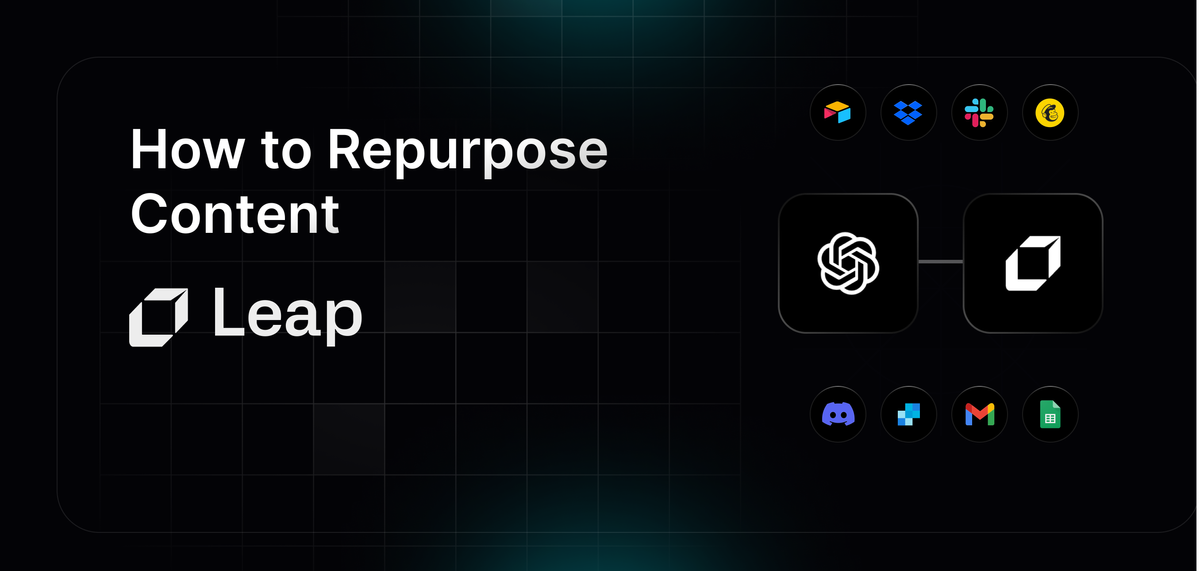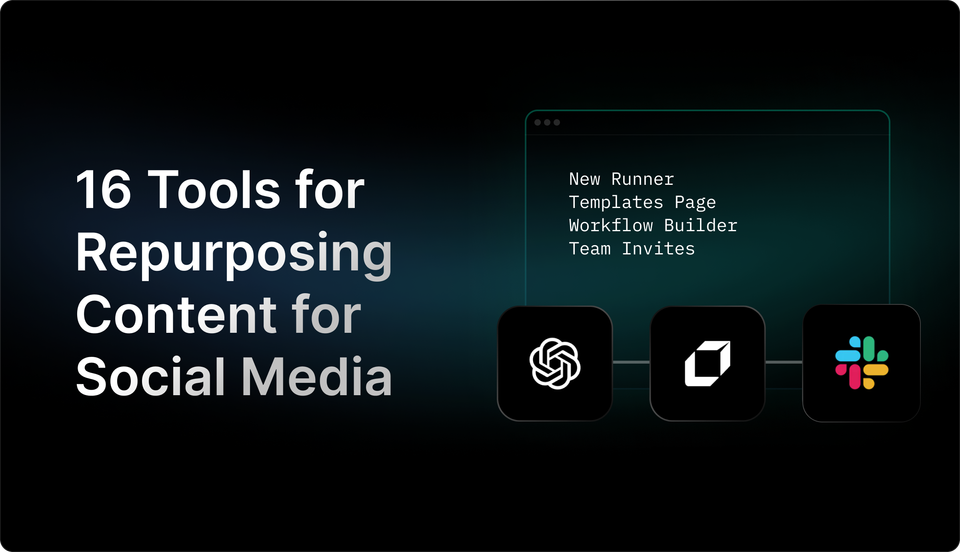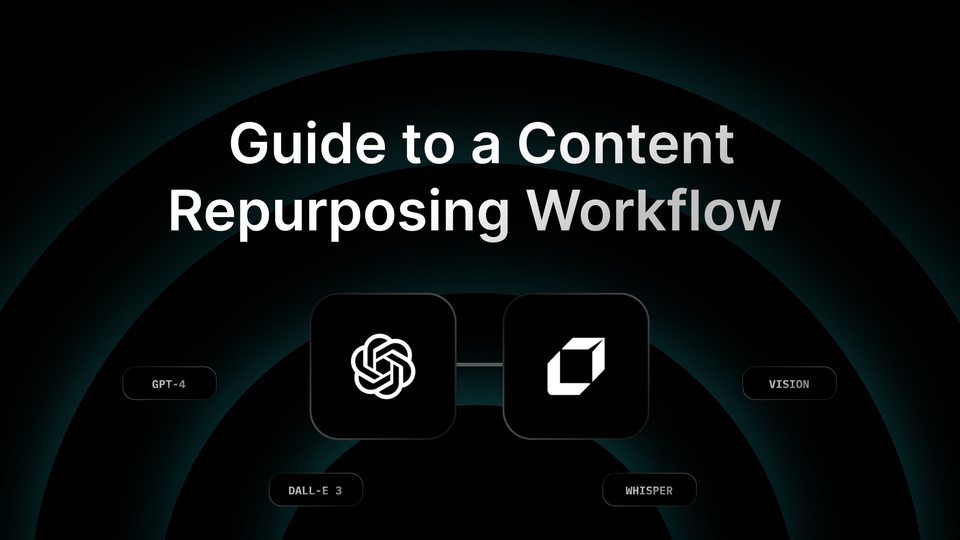How to Repurpose Content and Reach a Wider Audience Effectively
Looking to reach a wider audience with your content? Learn how to repurpose content to attract new followers and engage with your audience anew.

Repurposing content is a fantastic way to give your website a fresh perspective and attract a new audience. Diversifying your content distribution strategies, and getting creative with your old posts can help you reach more readers. Repurposing content can also improve your SEO, making it easier for people to find your website. Repurposing content is a great way to ensure you're always providing valuable content to your readers, even when you're short on time. In this blog, we'll help you streamline and improve your content distribution strategies to get the most out of your efforts.

What Is Content Repurposing and Its Importance

As a content creator, I've come to understand the value of content repurposing. It's the practice of reusing old content, but in a new format, so it can reach a wider audience base. It's a central part of my content marketing strategy because it allows me to share content across multiple channels, attracting new followers and keeping current followers engaged.
Repurposing content is like getting extra mileage out of work you've already done. It saves time, and it also helps me to maintain a consistent brand voice and message. It's a highly efficient way to keep my content fresh and relevant.
The Benefits of Repurposing Content
Extends the Reach of Content
One of the most significant benefits of repurposing content is that it extends the reach of my content. Sharing content in different formats helps to reach new people who prefer to engage with content in different ways. By sharing my content in multiple ways, I can share the message with a wider audience.
Enhances SEO
Another benefit is that it enhances search engine optimization (SEO). Repurposing content provides a perfect opportunity to maximize the use of specific keywords and themes. When search engine crawlers discover that I have related content across multiple channels, they identify me as a valuable source on the topic.
Consistent Brand Messaging
Another added benefit is that it helps to keep my brand messaging consistent. When I repurpose content, I am sharing the same message or ideas in various formats. This keeps my brand messaging clear and consistent, and it helps create a recognizable brand identity.
Content repurposing has been a game-changer for my content marketing strategy. It has allowed me to create more content efficiently, reach new audiences, and improve my SEO. It has also helped me to keep my brand messaging consistent across all platforms. I encourage content creators to give content repurposing a try and see how it can enhance their content marketing strategy.

Related Reading
- Content Promotion
- Content Repurposing
- Content Distribution Strategy
- Content Promotion Strategies
- Content Distribution Platforms
How Do You Identify Content for Repurposing?

Highlighting Evergreen Content
One of the keys to successful content repurposing is identifying evergreen content. Evergreen content stands the test of time, providing ongoing value to your audience regardless of when it was created. By revisiting your content library and pinpointing evergreen pieces, you can find valuable material that can be repurposed effectively. For instance, blog posts, research reports, whitepapers, and other long-form content that remains relevant over time are excellent candidates for repurposing.
Repurposing All New Content
When creating new content, it's crucial to incorporate repurposing into your workflow. Repurposing content facilitates broader content distribution and ensures that valuable pieces are not overlooked. By including content repurposing in your content workflow, you can efficiently repurpose all long-form content you create, amplifying its impact across multiple channels.
Identifying High-Performing Posts
Leveraging analytics tools such as Google Analytics is essential for identifying high-performing posts that drive significant traffic. By pinpointing these successful posts, you can determine which content is resonating with your audience and has the potential to be repurposed effectively. Look for pieces that align with evergreen themes and offer enduring value to your audience.
Using Buzzsumo for Socially Popular Topics
Another valuable tool for identifying content that resonates with your audience is Buzzsumo. By entering keywords related to your content in Buzzsumo, you can discover socially popular topics that have performed well on social media. This insight can help you identify additional posts that can be repurposed to engage your audience effectively.
Performing Keyword Research
To enhance your content repurposing strategy, it's advisable to conduct keyword research to identify topics of interest to your audience. By analyzing the keywords your audience is searching for across different platforms, you can uncover valuable insights that inform your repurposing efforts. For instance, conducting YouTube keyword research can reveal topics that you can repurpose into video content, expanding your content reach.
Implementing these strategies can help you revitalize your content library, engage your audience effectively, and maximize the impact of your content marketing efforts. By repurposing high-performing, evergreen content, you can extend the lifespan of your valuable material and reach a broader audience across various channels.
AI Automation with Leap Workflows
Partnered with Zapier, Vercel, and more, Leap enables you to supercharge your work by allowing you to create custom AI automation. Create sophisticated AI automations with no-code. Connect the tools you love with best-in-class AI text, image, and audio models.
Supercharge your existing tools with seamless AI integrations to OpenAI, Microsoft, and more. From summarizing documents, to voice translation, to AI call transcription, to AI avatar and asset generation, to SEO automation, to even automating the cold email creation and sending process, automate anything with Leap Workflows. The opportunities for automation are endless with Leap workflows.
Try Leap’s AI Workflows tool for free today.
Step-By-Step Guide on How to Repurpose Content Effectively

Repurposing Blog Content
1. Create a YouTube Video
Creating a YouTube video from a blog post that is heavy on visuals or step-by-step tutorials is a great way to repurpose content. This allows for a different way to engage with your audience and reach new viewers.
2. Create a SlideShare
Converting a high-performing blog post into a SlideShare presentation is an effective way to make your content easily shareable and introduce it in a new format that is visually appealing.
3. Create an Infographic
Infographics are a fantastic way to repurpose content that is stat-heavy. Summarize the key statistics from a blog post into an infographic, making it more engaging and shareable.
4. Create an Ebook
Long-form blog content can be repurposed into an ebook that offers more in-depth discussions on the subject. Use the blog post as a basis and expand on it to create a valuable resource for your audience.
5. Extract Thought Leadership Quotes
Take quotes from industry experts or thought leaders featured in blog posts and repurpose them on social media, in infographics, or email newsletters to leverage their insights.
6. Create a Podcast Episode
Repurpose high-performing blog posts into podcasts by using the content as a script or inviting thought leaders for deeper discussions. This allows for a new way to engage with your audience.
Repurposing Content for Social Media
7. Use Old Images as Post Backgrounds
Leverage high-quality visuals from blog posts as post backgrounds for quotes or standalone images to draw attention to past projects.
8. Post Snippets of Existing Video Content
Edit down video content to fit social media platforms' requirements, allowing you to reach a wider audience by repurposing video content across different platforms.
9. Post User-Generated Content
Repackage user-generated content, such as reviews or tweets, for social media to showcase customer satisfaction and engagement.
10. Repost Social Media Content from Your Other Profiles
Share content from one social media platform to another to increase visibility and reach across different audiences and platforms.
11. Create New Infographics
Utilize existing content to create infographics, especially for data-heavy topics, as visuals help convey information more effectively and are more memorable for audiences.
12. Extract Quotes from Existing Content
Repackage top-performing content by extracting impactful quotes for social media posts across different platforms to increase engagement and reach.
Repurposing Webinars and Videos
13. Create Text Transcripts of Your Videos
Make videos and webinars accessible by creating transcripts, allowing a broader audience to enjoy the content.
14. Turn Video Transcripts into Blog Posts
Repurpose video transcripts into blog posts by leveraging the structured content of the videos for informative and engaging blog content.
15. Create a Podcast Episode
Convert webinars and videos into podcasts by extracting audio and cleaning it up for posting on podcast platforms, expanding the audience reach.
Repurposing Podcasts
16. Record Your Podcast Sessions for Social Media
Use video snippets of podcast recording sessions to generate excitement among the audience and entice them to listen to the full episodes.
17. Pull Out Quotes for Social Media
Highlight quotes from industry experts and guests to create engaging social media posts that drive audience engagement and interest.
18. Create Transcripts of Your Podcasts
Generate transcripts of podcast episodes for accessibility and repurpose them as blog posts for additional content and SEO value.
19. Embed Your Podcasts into Your Blog Posts
Enhance blog posts with embedded podcast episodes to provide users with additional value and context, increasing engagement and interaction.
Repurpose by Updating Older Content
20. Update Older Posts
Identify and update older posts with new developments, advice, or additional information to ensure they remain relevant and keep attracting traffic and leads.
24 Top Tools and Technologies for Content Repurposing

1. Leap
Leap helps you to automate your work with the power of AI. Partnered with Zapier, Vercel, and more, Leap enables you to supercharge your work by allowing you to create custom AI automation. Create sophisticated AI automations with no-code. Connect the tools you love with best-in-class AI text, image, and audio models.
Supercharge your existing tools with seamless AI integrations to OpenAI, Microsoft, and more. From summarizing documents, to voice translation, to AI call transcription, to AI avatar and asset generation, to SEO automation, to even automating the cold email creation and sending process, automate anything with Leap Workflows. The opportunities for automation are endless with Leap workflows.
Try Leap’s AI Workflows tool for free today.
2. Airtable
The tool is flexible enough to handle the entire content reuse process. Use it to manage lists of keywords to help you optimize content for search engines, build a content calendar to keep track of deadlines and assignments, and measure the metrics and audience feedback for your repurposed posts.
3. BuzzSumo
BuzzSumo helps you discover and filter results by content type (infographics, giveaways, interviews, videos, and guest posts) to see what’s already published about a given topic as you plan your content update. When you want to add new points of view to an existing article, BuzzSumo can help you find influencers and experts on your topic.
4. Google Tools
Google Analytics shows you how users interact with your content, including total page views over time, overall social engagement, and time spent on the site. Use these parameters to help you decide which content is best suited for repurposing.Google Search Console helps you see which pages attract the most links. Keep in mind that some content might attract links even if it doesn’t generate much traffic.
5. HockeyStack
HockeyStack is an analytics solution that helps you understand which content brings the most signups or other goals. For example, this tool will help you find out how much revenue or how many conversions each blog post brings in so you can focus your content reuse and repurposing around those topics.
The tool’s funnel analysis gives you a step-by-step journey of every visitor. You can quickly see which content converts, engages visitors, and even measure the quality of inbound leads. You can use that insight to guide your repurposing choices.
6. SE Ranking
Another way to decide which content makes sense to repurpose is to look at your search rankings and the search terms that drive the most traffic to your site. You can use SE Ranking (full disclosure, I work for the company) to track your ranking history, identify your most popular search terms, and discover which content achieved your goals in a certain period.
7. Airstory
Writing platform Airstory lets you keep drafts, notes, and related content together as you work on a repurposing project. Use this drag-and-drop document builder to gather pieces of content you want to repurpose and collaborate with other content creators working on the same asset. The flexible tool lets you set up projects with deadlines, establish word-count goals, and upload templates for visuals, scripts, etc.
8. MeetEdgar
To schedule, manage, and republish your social media content, try MeetEdgar. This social media scheduling tool lets you create a “library” of social media posts that automatically reposts for you over time. You fill the library with text, images, links, and graphics, group them by category, and indicate the platforms on which you want to share them. MeetEdgar publishes the scheduled posts in each category; when the content runs out, the tool starts reposting it automatically.
9. Planable
Planable is another option that helps you streamline social media content publishing processes, from planning and creating new content to updating and republishing posts. The tool’s low learning curve lets you build and manage an efficient social media approval process. The Calendar View feature helps you schedule content (whether new or repurposed) by dragging and dropping it to the correct time slot.
10. Repurpose
Repurpose is a great live video broadcaster and podcaster that lets me quickly push all my Facebook Live videos to YouTube, make an audio file on SoundCloud, deliver a file to Dropbox, etc. All it takes is to connect your accounts to the Repurpose tool.
Use the tool to push live or prerecorded videos from your business page and personal pages to any of the platforms I mentioned. The best thing about Repurpose is that it simplifies your video and audio repurposing workflows to extend your content’s reach with minimal effort.
11. Moosend
Articles and videos can attract new visitors from search or social promotions, but email lets you get your repurposed work out to the people you’ve already built relationships with – your subscribed audience. That makes content and email a dynamic marketing duo. Try Moosend to create emails to promote your repurposed content.
The tool makes it easy by offering responsive email templates and a drag-and-drop builder. Moosend also provides real-time analytics that let you identify your top-performing content and make informed decisions about your email campaigns.
12. AI Video Marketing Automator
AI Video Marketing Automator is an app for Semrush that lets you repurpose blog content into YouTube, TikTok, and Instagram videos. You can create videos from blog posts in seconds and customize them with captions and AI voiceovers. You can also translate them into 20+ languages. This can help make your videos more engaging and allow you to reach a wider audience.
13. ChatGPT
ChatGPT can serve as a versatile content repurposing tool. For example, you can feed it an article and ask to make it into a LinkedIn post, an X (formerly Twitter) thread, or a newsletter email. Or you could tell it to turn your blog post into a video script.
You could even ask it to give you ideas for how to repurpose your content. Although it isn’t a dedicated content repurposing tool, ChatGPT is a good option for small or one-person marketing teams that don’t have much time to spend repurposing content.
14. Lumen5
Lumen5 can turn your blog posts, white papers, and other written content into videos using AI and machine learning. The software summarizes your written content and adds relevant images or video footage from its library. The tool comes with hundreds of templates and a large library of images, music, and video footage to create engaging videos quickly.
15. Canva
You already know about and might have used Canva. But did you know about its content repurposing capabilities? Canva is a highly versatile tool for content repurposing. Turn existing content into dozens of new pieces across a variety of different formats. Including infographics, ebooks, social media graphics, presentations, and more.
Its “Magic Switch” tool can help you repurpose your content faster by resizing your designs for multiple channels at the same time. Then, there’s “Magic Write,” Canva’s AI tool that can help you generate captions and social posts quickly. You can also use hundreds of templates to quickly repurpose your existing content.
16. 2short.ai
2short.ai is a content repurpose software that analyzes your video content to identify the most engaging parts and turns them into short clips. You can then add animated subtitles, branded overlays, and logos to all the clips in a few clicks. 2short.ai supports a variety of aspect ratios to align with the video requirements of all the major social media platforms. It also has a very useful facial tracking feature that helps keep speakers at the center of the screen.
17. Automata
If you’re looking for AI-powered content repurposing tools that work well for businesses and content creators, you’ll want to check out Automata. This tool will monitor your blog feed or YouTube channel and automatically create new content. Automata supports more than 150 input/output combinations. It can turn videos into blog posts, blog posts into email newsletters, newsletters into social threads, and so on.
18. Wavve
Wavve can help you repurpose your audio content. It turns your podcasts, audiobooks, and talks into social-media-ready video clips. You can use it to create trailers for your podcasts and ebooks and share episode highlights. Wavve lets you customize the clips it creates by using the built-in drag-and-drop editor, which allows you to add images, text, and animations.
19. Vidyo.ai
Vidyo.ai is an AI-powered platform that turns your long-form video content into short clips you can share across social media. It also captions all the clips automatically using AI. The software can detect scene changes in your videos automatically, ensuring high-quality clips from interview-style content. It can generate 30-45 short clips from an hour-long video.
20. MissingLettr
MissingLettr is an all-in-one social media marketing platform that turns your content into engaging social media posts. If you like the idea of having something automatically create and schedule branded social media posts while you do more important stuff (like binge-watch Stranger Things), then MissingLettr is the social media marketing platform for you. Missing Lettr will analyze your content and extract the most valuable quotes and images, using their own algorithms to match your content with trending hashtags and popular content.
21. Contentdrips
Contentdrips is a content creation platform that enables you to quickly and easily create social media content such as interactive carousels and quote images. You can even turn tweets into images that can then be shared on LinkedIn, Instagram and any of your other social media accounts.
The platform features a powerful content editor that features one-click edits, the ability to swap templates without losing your content ( a surprisingly common problem with many online content editors) and literally thousands of elements and templates to give your content a bit of bling.
22. Designrr
Designrr is easily one of the most versatile content repurposing tools on this list. The platform supports a wide range of formats and can be used to convert blog posts, podcasts, videos into PDFs into ebooks, dynamic flipbooks and more.
Designrr also has an awesome transcription feature that enables you to convert podcast episodes and YouTube videos into PDF ebooks and blog posts. Very cool. Perfect for course creators, coaches, podcasters and YouTubers, Designrr is one of the most effective tools for boosting your content marketing efforts.
23. Movavi
Movavi Video Editor comes with a plethora of features to assist with video content creation and repurposing. For starters, the video editing tool makes it easy to split lengthy videos into shorter clips with its smart scene detection. This AI-driven scene detection feature, with great accuracy, neatly slices your video into shorter segments according to automatically detected scene changes.
With the split overlay feature, you can create a dynamic split-screen from multiple videos, letting you tweak their aspect ratio and position. You can thus get podcast and Q&A style videos without having to get different speakers together to conduct coordinated sessions.
24. Reduct
Reduct is a handy video repurposing tool aimed at various audiences, including professionals working in the film, marketing, academics, and education niches. Reduct’s most notable feature is its AI-driven transcript editor, which can transcribe all kinds of long-form videos within minutes with commendable accuracy.
This means you can easily turn your videos into detailed blog posts and articles. You can then highlight the most important parts of the video based on the generated transcript. Reduct will create short videos containing these key takeaways by cutting out the unneeded parts from the original video. You can then easily download this new short video as a .mp4 file.
Related Reading
- Content Repurposing Workflow
- Repurposing Content For Social Media
- Content Promotion Services
- Video Content Distribution
- Animoto Alternative
- Social Media Distribution
- Content Repurposing Service
- Repurpose Video Content
- Paid Content Distribution
- Content Distribution Software
Challenges When Repurposing Content and How to Overcome Them

How to Strategically Repurpose Content to Avoid Common Challenges
Creating a solid strategy before diving into repurposing your content is key. Think about who you want to reach and how. Before you repurpose, it is important to consider the goal of repurposing content, the various content types you want to repurpose, and the platforms you plan to use.
Updating and Enhancing Content for Effective Repurposing
Before repurposing content, it is crucial to ensure that it is fresh and relevant. Outdated content can harm your reputation, so review and update your content diligently.
Adapting Content to New Formats for Effective Repurposing
Repurposing content is not as simple as copying and pasting. Adapting content to fit different formats and platforms is necessary. Consider the unique features and preferences of each format and platform.
Adding Value and Variety to Repurposed Content for Maximum Impact
A key challenge in repurposing content is ensuring that it remains interesting, useful, and appealing. To achieve this, add value and variety to your content by using various perspectives, angles, stories, and formats.
Promoting and Distributing Repurposed Content for Wider Reach
After repurposing content, its promotion and distribution are crucial. You don't want your repurposed content to languish on your platforms without exposure. Utilize various channels and tactics to promote and distribute your content effectively.
Related Reading
- Content Distribution Companies
- Planable Alternatives
- Repurpose Alternative
- Repurpose Blog Content
- Content Promotion Tools
- Visme Alternatives
- B2b Content Distribution
- Socialpilot Alternatives
- Vidyo Ai Alternatives
- Content Distribution Services
- Meetedgar Alternatives
- Missinglettr Alternatives
- Lumen5 Alternative
Measuring Your Content Repurposing Success

When repurposing content, it's essential to measure the success of your efforts to understand if they are effective. Start by defining key performance indicators (KPIs) that you can use to compare various content types. The KPIs will differ based on the content format and platform you're using. Here are some of the main metrics you should consider tracking:
Website Traffic
Keep an eye on the metrics like views and users that visit your website after repurposing content.
Engagement Metrics
Monitor average engagement rate, shares, comments, and saves to understand how well your content is resonating with the audience.
Conversion Metrics
Track total conversions and conversion rates to determine if your repurposed content is driving the desired actions.
SEO Metrics
Analyze keyword rankings and organic traffic to see how well your repurposed content is performing in search engines.
Create Game Changing Automations Today With Leap’s AI Workflows
Content repurposing is an essential strategy for expanding the reach of your existing content by recycling and reformatting it into various forms. With AI workflows, you can automate this process to save time, streamline your content creation efforts, and ensure consistency across all your content.
By leveraging AI models, you can transform text, images, audio, and other content types effortlessly. You can use AI to expedite tasks like summarizing documents, translating text, transcribing calls, creating avatars, automating SEO processes, and generating email content. This seamless integration of AI into your workflows can supercharge your content repurposing efforts.
Harnessing AI Models to Repurpose Content
AI models can transform your content repurposing efforts by quickly generating new content from existing material. For example, you can use AI to summarize lengthy articles into concise blurbs or to create transcripts from podcast episodes for blog posts. These AI-powered tools can significantly reduce the time and effort required to repurpose content, allowing you to focus on creating high-quality content that resonates with your audience.
Creating Custom AI Automations with Leap Workflows
Leap Workflows enable you to create custom AI automations tailored to your specific content repurposing needs. By combining the power of AI with tools like Zapier and Vercel, you can design sophisticated automations that enhance your content repurposing workflows. Whether you want to automate the creation of email campaigns, optimize your SEO strategies, or generate AI-driven assets for your content, Leap Workflows can help you achieve your goals efficiently and effectively.
Supercharging Your Tools with AI Integrations
Leap's seamless integration with OpenAI, Microsoft, and other AI providers allows you to supercharge your existing tools with powerful AI capabilities. By integrating AI models into your content repurposing workflows, you can unlock new possibilities for transforming your content into various formats. Whether you need to generate AI avatars, create compelling visual assets, or optimize your content for search engines, these AI integrations can give you a competitive edge in the content repurposing landscape.
Unlocking Endless Opportunities for Automation
With Leap Workflows, the opportunities for automating content repurposing tasks are virtually limitless. Whether you want to automate the transcription of calls, translate text into multiple languages, or generate personalized email content, you can achieve all these tasks and more with Leap's AI-powered tools. By embracing AI automation, you can streamline your content repurposing efforts, engage your audience more effectively, and stay ahead of the competition in the ever-evolving digital landscape.




